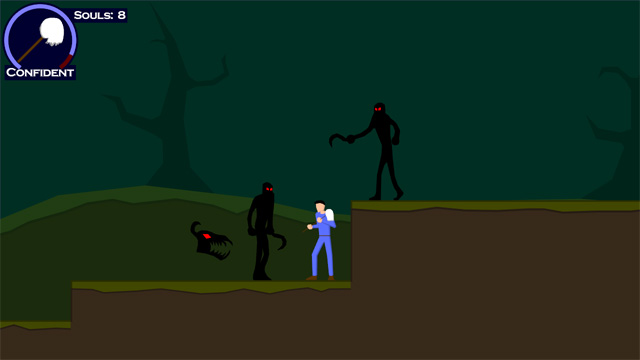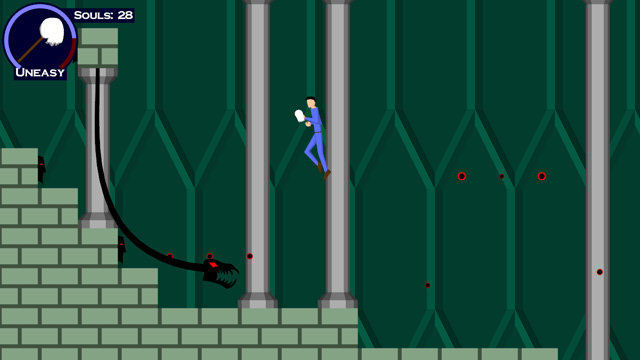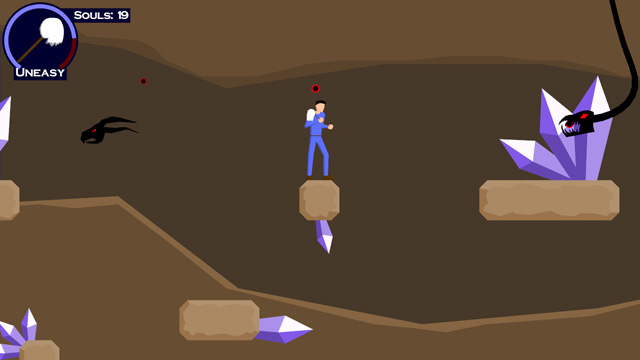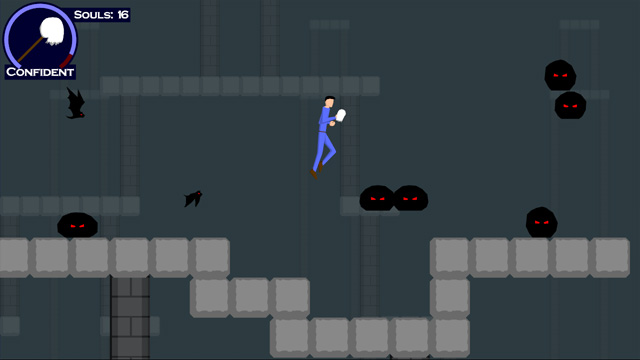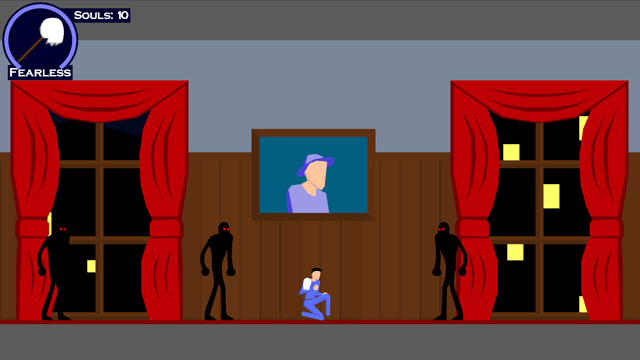So, the Four Elements V contest was announced in June. The rules are simple: Create a game, include the four elements:
- Europe
- Emblem
- Economy
- Emotion
Have it done by November 30th.
That said, I thought “well, those elements sound hard, screw that.” And I went along my merry way. Sometimes after that, I moved cross country and started a new job. But I had been watching the forums, and I noticed a few things:
Everyone seemed to go “I can do that! I’m making a…” followed either by “RPG” or “Strategy/Simulation game.” I began to think about what I could do that would be DIFFERENT from anything else in the competiton. It took a week or so before I came up with an idea, but I did:
Mop of Destiny: Lead the Palace of Westminster’s Caretaker, Jack Scroggins, on an epic battle against the advancing armies of The Shadow. It’s essentially a 2D action/platformer, along the lines of the original Castlevania games.
The four elements were as follows:
- Europe – I set it in (and beneath) the Palace of Westminster, with the final level being a frantic climb up the turning gears inside of the clock tower colloquially known as Big Ben.
- Emblem – At the completion of each level, Jack must touch the Emblem of Light. Each emblem is a seal on the gate to the Shadow Realm, and must be re-activated by Jack.
- Economy – Again, at the completion of each level, a spiritual shopkeeper will appear, allowing the caretaker to purchase (or sell) special weapons and healing items using the souls of enemies vanquished along the way.
- Emotion – Instead of being able to physically harm Jack, the Shadows can only cause him to become more afraid. As he becomes more afraid, his perceptions of the surroundings change (the world becomes a bit less colorful), and he recoils farther and farther in horror. If he becomes TOO afraid, he loses his sanity and becomes a shadow himself, and the game ends.
Since I was moving, I did not really have computer/Internet access, so I spent alot of time jotting notes and drawing concept sketches of various worlds. Initially, there were to be 8 levels (though this has been pared down to 6 for time), starting in the Palace of Westminster, taking Jack through the caves leading to the gateway into the Shadow Realm itself, then on a quick, frantic escape from the Shadow Realm, and finally up the clocktower to do battle with the Shadow King himself.
I determined what the big “problem areas” of gameplay would be, and decided to frontload most of them, to ensure that I knew that I had a chance of finishing. The main problem area had to do with the final level: Jumping from gear to gear would require some crazy collision detection and platform motion response. So that became the first goal: to get a “Control Test” working. This would have a bunch of platforms for the main character (represented by a fantastically drawn rectangle) to jump around on, including horizontal/vertically moving platforms and a spinning gear.
By this point, it was near the end of July, and I knew I had to get started. I initially started working on a basic level editor. I made a decision early on that the graphics would be 100% polygonal. Excepting the render targets, there is not a single texture in the entire game. This made the graphics code easy (all of the major graphics code was written in about a day), and made level editing easy (each vertex is a 2D position and a color). However, the level editor soon proved to be very complex – an interface that would allow me to do what I wanted would be a real pain to design.
I did some tests with some 3D modeling applications, and none of them were as simple to use as I’d like. However, my wife is an interior designer, and has AutoCAD, which proved to be amazingly simple. It was exactly the type of 2D model/level editor that I needed (with one major exception that I’ll talk about in a later post). Thus, I scrapped the whole editor I’d been working on and switched over to using AutoCAD.
By this point, it was mid-August. I needed to really get started, and I needed to get started fast; my design was very ambitious, so I needed to get working. My schedule was set as follows:
By the end of August, I wanted to have a gameplay test, complete with moving gears and working controls.
By the end of September, I wanted all of the major subsystems done. Sound, music, fonts, levels, animation, enemies, the HUD, the ability to walk to the next zone in the level, stuff like that.
By the end of October, I wanted to have the entire game playable (only no art assets would be done). You’ll see in a moment that this didn’t entirely happen (I ended up doing all of the character art in October, because making the actual enemies would have sucked without their art).
then, finally, it had to all be done by the end of November.
Currently it’s November 14th, and I have just completed my first complete playthrough of the game. None of the background art is done, and only 2 of the songs are done, but the game is playable. I have 16 days to do all of the art (I’m not an artist, really), and the music (I am, however, a composer), and the voice acting (which I can do), and the sound effects.
It’s going to be rough, but I think I can do it.
And now, to some SCREENSHOTS!
Keep in mind, of course, that I have not done any of the background art, so the screenshots kinda look like decent sprites running around on an Atari 2600 playing field, but the background art is going to start to get done soon.



Click to enlarge
Anyway, I’ll be continuing to post about the history of the project through when I (hopefully) finish it ontime for a victorious first place!
